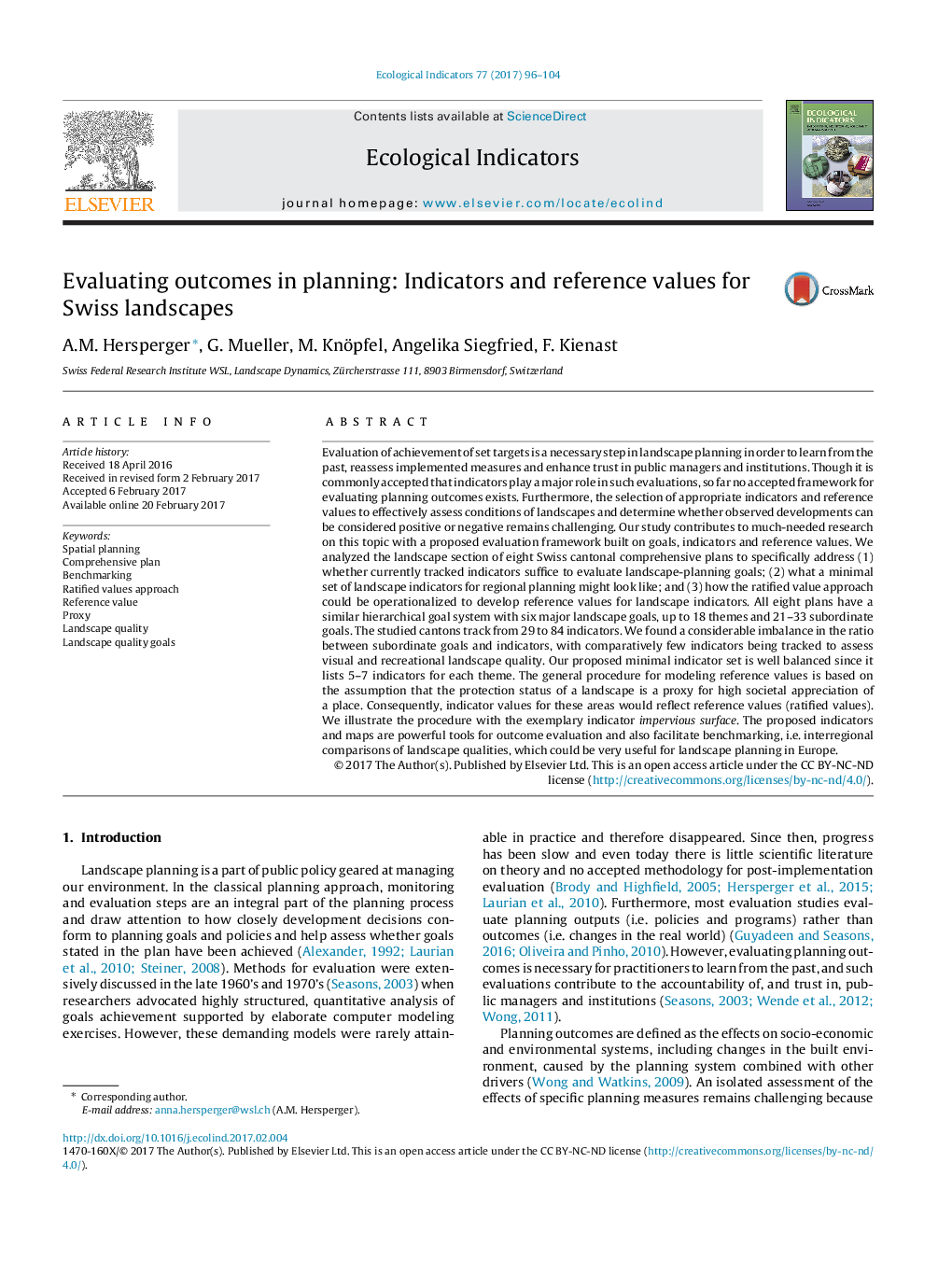| کد مقاله | کد نشریه | سال انتشار | مقاله انگلیسی | نسخه تمام متن |
|---|---|---|---|---|
| 5741713 | 1617125 | 2017 | 9 صفحه PDF | دانلود رایگان |
- Goals, indicators and reference values were linked for efficient outcome evaluation.
- Protected landscapes with a high societal appreciation of a place were successfully used as a proxy to develop reference values.
- Results for the indicator “impervious surface” illustrate that the ratified values approach could potentially be highly effective in evaluations and benchmarking.
- Goals, indicators and reference values were linked for efficient outcome evaluation.
- Protected landscapes with a high societal appreciation were successfully used as a proxy to develop reference values.
- Results “impervious surface” illustrate that the ratified values approach can be highly effective in evaluations.
Evaluation of achievement of set targets is a necessary step in landscape planning in order to learn from the past, reassess implemented measures and enhance trust in public managers and institutions. Though it is commonly accepted that indicators play a major role in such evaluations, so far no accepted framework for evaluating planning outcomes exists. Furthermore, the selection of appropriate indicators and reference values to effectively assess conditions of landscapes and determine whether observed developments can be considered positive or negative remains challenging. Our study contributes to much-needed research on this topic with a proposed evaluation framework built on goals, indicators and reference values. We analyzed the landscape section of eight Swiss cantonal comprehensive plans to specifically address (1) whether currently tracked indicators suffice to evaluate landscape-planning goals; (2) what a minimal set of landscape indicators for regional planning might look like; and (3) how the ratified value approach could be operationalized to develop reference values for landscape indicators. All eight plans have a similar hierarchical goal system with six major landscape goals, up to 18 themes and 21-33 subordinate goals. The studied cantons track from 29 to 84 indicators. We found a considerable imbalance in the ratio between subordinate goals and indicators, with comparatively few indicators being tracked to assess visual and recreational landscape quality. Our proposed minimal indicator set is well balanced since it lists 5-7 indicators for each theme. The general procedure for modeling reference values is based on the assumption that the protection status of a landscape is a proxy for high societal appreciation of a place. Consequently, indicator values for these areas would reflect reference values (ratified values). We illustrate the procedure with the exemplary indicator impervious surface. The proposed indicators and maps are powerful tools for outcome evaluation and also facilitate benchmarking, i.e. interregional comparisons of landscape qualities, which could be very useful for landscape planning in Europe.
Journal: Ecological Indicators - Volume 77, June 2017, Pages 96-104
